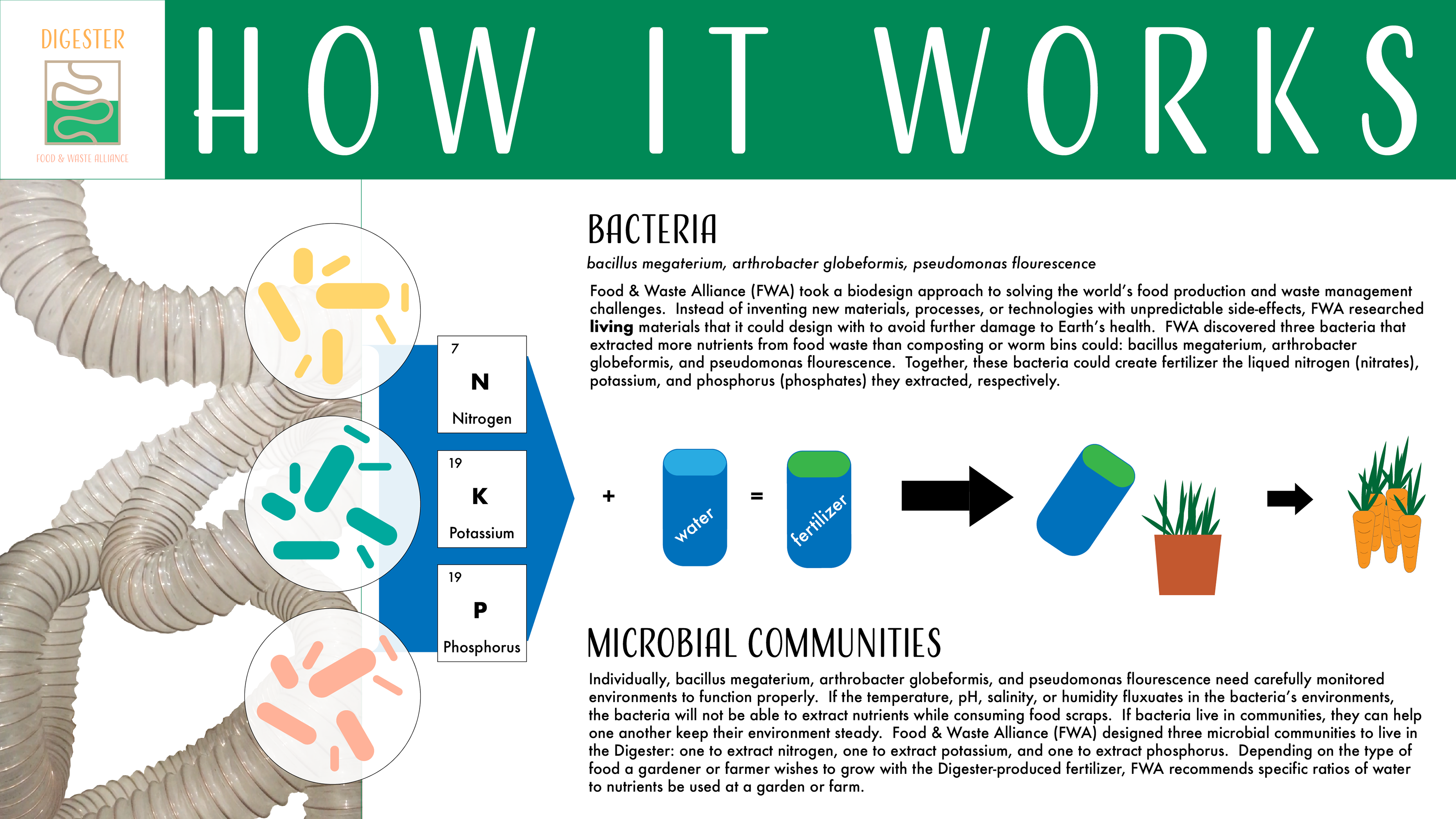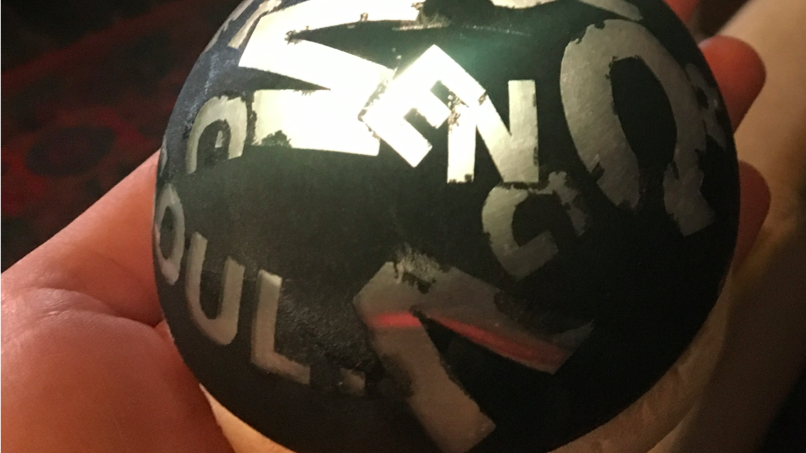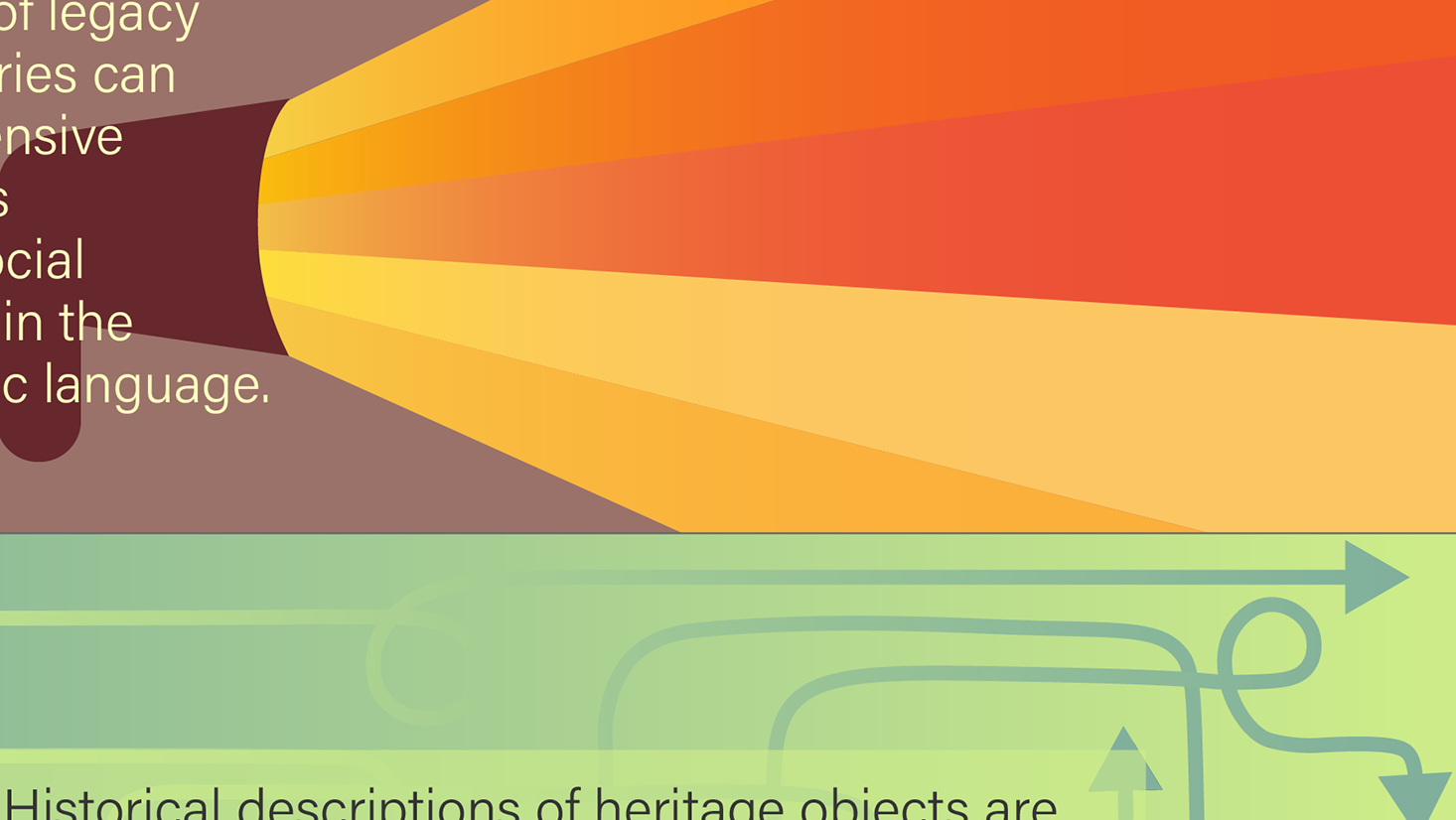Integrating food production and waste management for sustainable urban living
A future business for a circular economy
GRAPHIC DESIGN | INTERDISCIPLINARY COLLABORATION | MAKING | SPECULATIVE DESIGN | WRITING

Explanation card that accompanies all purchases of the Digester, the Food & Waste Alliance's first product

Biology experiment with three bacteria that informed the speculative design of the Digester
According to a 2015 study of household waste bins in Scotland, food waste accounts for approximately 29% of the material in waste bins [1] and Scotland only recycles 27% of its food waste properly [1]. The majority of food waste goes to landfills and produces greenhouse gases as it decomposes [2].
Scotland's food waste management reflects a global problem: we waste one third of all food produced [3].
For a speculative biodesign project, I imagined the company Food & Waste Alliance (FWA). In the year 2028, FWA enables a circular food economy with its products and services. Its products include the Digester, a bacteria-powered waste bin that transforms food waste into fertilizer. Its services include delivery of customers' excess fertilizer to farmers and delivery of food grown with Digester-produced fertilizer.

Cover page from the FWA product book

About FWA (excerpt from Food & Waste Alliance's product book)

Overview of FWA products (excerpt from FWA product book)

Digester description (excerpt from FWA product book)


Food & Waste Alliance seeds to grow food with Digester-produced fertilizer

Food & Waste Alliance seeds to grow food with Digester-produced fertilizer

Food & Waste Alliance seeds to grow food with Digester-produced fertilizer
Created with Adobe Illustrator, InDesign and Photoshop, a ducting tube, bacteria, food waste and the Circular Design Guide*
Citations:
1. 5 Key takeaways from the composition of household waste report. (2018, March 19). Retrieved from https://www.zerowastescotland.org.uk/content/5-key-takeaways-composition-household-waste-report
2. United Nations Environment Programme. (2013, Sept. 11). Food waste harms climate, water, land and biodiversity - new FAO report. Retrieved May 1, 2018, from https://www.unenvironment.org/news-and-stories/press-release/food-waste-harms-climate-water-land-and-biodiversity-new-fao-report
3. One-third as measured by weight. (Food and Agriculture Organization of the United Nations). 2011. Global food losses and food waste--extent, causes and prevention. Rome: UN FAO.
*by IDEO and the MacArthur Foundation









